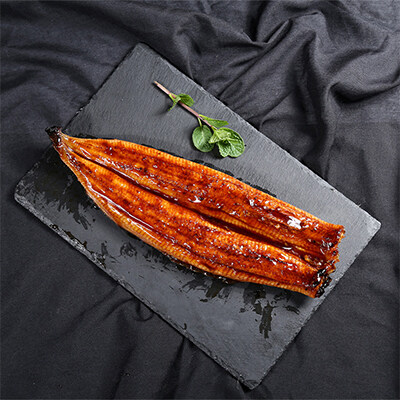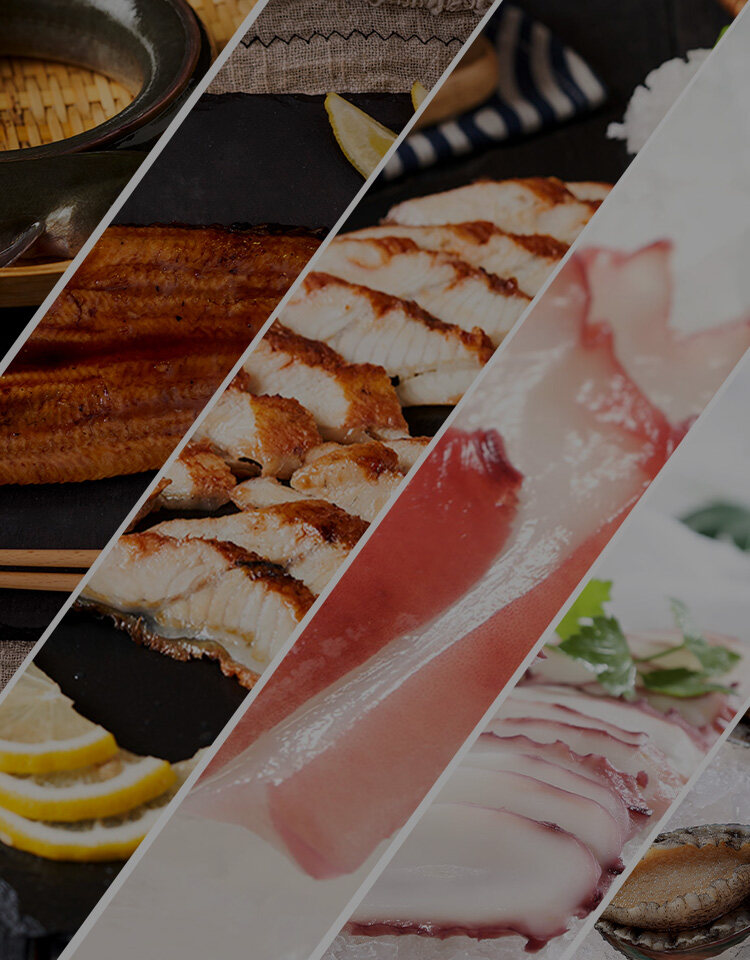Email cannot be empty
Password cannot be empty
Email format error
Email cannot be empty
Email already exists
6-20 characters(letters plus numbers only)
The password is inconsistent
Email format error
Email cannot be empty
Email does not exist
6-20 characters(letters plus numbers only)
The password is inconsistent


Exploring the World of Japanese Seafood Snacks: A Culinary Adventure
Japan, an island nation rich in maritime resources, has a unique and fascinating culinary tradition that celebrates the bounty of the sea. One of the most intriguing aspects of Japanese cuisine is its array of seafood snacks, which offer a taste of the ocean in a variety of exciting and delicious forms. Whether you're a seasoned seafood lover or someone new to these culinary delights, Japanese seafood snacks provide a delightful way to explore Japan's maritime culture. In this blog post, we'll dive into the world of these snacks, uncover their history, and discover why they are so beloved.
The Rich History Behind Japanese Seafood Snacks
Japanese seafood snacks have a long history that dates back centuries. The Japanese archipelago has always been surrounded by the sea, and seafood has been a staple in the Japanese diet for generations. In ancient times, preserving seafood through methods like drying and salting was essential for survival. These methods not only extended the shelf life of seafood but also created unique flavors and textures that have become integral to Japanese cuisine.
One of the earliest examples of preserved seafood snacks is okaka, which is dried bonito flakes. Bonito, a type of tuna, is smoked and dried until it becomes a hard, flavorful product. These flakes are used in a variety of dishes, including as a topping for rice or as a flavor enhancer in soups. The practice of making okaka has been passed down through generations and remains a beloved snack today.
Types of Japanese Seafood Snacks
Japanese seafood snacks come in many forms, each with its own unique flavor and texture. Here are some popular types:
Tako Wasabi (Octopus Wasabi): Tako wasabi is a popular snack made from cooked octopus marinated in a spicy wasabi sauce. The octopus is tender and flavorful, and the wasabi adds a spicy kick. This snack is often enjoyed with a cold beer or as a part of a larger meal.
Ebi Senbei (Shrimp Crackers): Ebi senbei are crispy, light crackers made from ground shrimp and rice flour. They come in various shapes and flavors, from plain to spicy. Ebi senbei are perfect for snacking on the go or as an accompaniment to tea.
Agedashi Tofu with Seafood: While not a traditional snack, agedashi tofu with seafood is a delightful fusion of Japanese flavors. The tofu is deep-fried and served in a savory dashi broth with pieces of seafood like shrimp or fish. It’s a comforting and satisfying dish that showcases the versatility of Japanese seafood.
Kaki no Tane (Spicy Rice Crackers with Seafood): Kaki no tane are spicy rice crackers often mixed with dried seafood, such as shrimp or fish. The crackers are crunchy and have a spicy, umami flavor that comes from the seafood and seasoning. They are a popular choice for parties and casual gatherings.
Sakana Jiru (Fish Soup): Sakana jiru is a comforting fish soup made with a variety of seafood, including fish, shrimp, and clams. The broth is rich and flavorful, and the seafood adds depth to the dish. It’s a great way to enjoy a warm, hearty snack on a chilly day.
Why Japanese Seafood Snacks Are So Special
Japanese seafood snacks stand out for several reasons:
Freshness and Quality: Japanese cuisine places a strong emphasis on the quality and freshness of ingredients. Seafood snacks are no exception. Many Japanese seafood snacks are made with high-quality, fresh seafood that is carefully prepared to preserve its natural flavors.
Flavor Balance: Japanese cuisine is known for its harmonious balance of flavors. Seafood snacks often combine umami (a savory taste) with other flavors like spicy, sweet, or tangy. This balance creates a unique and satisfying taste experience.
Cultural Significance: Seafood is deeply ingrained in Japanese culture and traditions. Many seafood snacks have historical and cultural significance, reflecting the importance of seafood in Japanese life. Enjoying these snacks can be a way to connect with Japanese history and culture.
Innovation: While traditional seafood snacks are beloved, Japan is also known for its innovation in snack foods. New and creative seafood snacks are constantly being developed, offering exciting and novel experiences for snack enthusiasts.
How to Enjoy Japanese Seafood Snacks
Enjoying Japanese seafood snacks can be a fun and flavorful experience. Here are some tips for making the most of these delightful treats:
Pair with Beverages: Many seafood snacks go wonderfully with beverages like green tea, sake, or beer. The flavors of the snacks can be enhanced by the right drink, creating a more enjoyable tasting experience.
Experiment with Flavors: Japanese seafood snacks come in a wide range of flavors and spice levels. Don’t be afraid to try different varieties to find your favorites. Whether you prefer something spicy, sweet, or savory, there’s likely a seafood snack that suits your taste.
Use as Appetizers: Seafood snacks can make excellent appetizers for a meal or party. Their unique flavors and textures can be a great conversation starter and can complement a variety of dishes.
Incorporate into Recipes: Some seafood snacks can be incorporated into recipes for added flavor and texture. For example, crushed ebi senbei can be used as a crunchy topping for salads or soups.
Diving Deeper into Popular Japanese Seafood Snacks
To truly appreciate Japanese seafood snacks, it helps to dive deeper into some of the most beloved varieties. Here’s a closer look at a few standout snacks that embody the essence of Japanese seafood cuisine.
1. Katsuobushi (Dried Bonito Flakes)
Katsuobushi, or dried bonito flakes, are a cornerstone of Japanese culinary tradition. Made from skipjack tuna that is smoked, fermented, and then shaved into thin flakes, katsuobushi adds a deep umami flavor to dishes. The process of making katsuobushi is meticulous, involving smoking and drying the fish over several months. The resulting flakes are used in a variety of ways: as a topping for rice, in soups like miso and dashi, or even as an ingredient in savory pastries.
One interesting fact about katsuobushi is its role in the traditional Japanese tea ceremony. A small amount of these flakes can be added to the tea to enhance its flavor, providing a unique umami twist to the beverage.
2. Arare (Rice Crackers with Seafood)
Arare are small, bite-sized rice crackers that come in various shapes and flavors. When combined with seafood, these crackers become even more delightful. Variants like aonori arare feature seaweed-flavored crackers, while ebi arare include shrimp bits for an added burst of seafood flavor. These crunchy snacks are often enjoyed as part of a bento lunch or as a casual snack with drinks.
The preparation of arare involves a process of cooking rice, shaping it into small pieces, and then baking or frying. The result is a crispy, light snack that pairs wonderfully with beverages or as a topping for soups and salads.
3. Takoyaki (Octopus Balls)
Takoyaki are savory balls of batter filled with tender chunks of octopus, green onions, and pickled ginger. Originating from Osaka, these popular street food items are cooked in special takoyaki pans that create spherical shapes. The balls are then topped with takoyaki sauce, bonito flakes, and a sprinkle of dried seaweed.
While takoyaki is typically served hot and fresh, pre-packaged versions are also available as a snack option. These packaged takoyaki can be enjoyed cold or reheated, offering a convenient way to savor this classic Japanese treat without needing to visit a street vendor.
4. Tsukudani (Seafood Preserves)
Tsukudani is a type of Japanese preserved food made by simmering seafood in soy sauce, sugar, and mirin. The result is a savory-sweet condiment that pairs excellently with rice. Common ingredients in tsukudani include small fish, seaweed, and shellfish.
For those who enjoy a more intense flavor, tsukudani made from dried sardines or small shrimp can be a great choice. These preserved seafood snacks offer a robust flavor that is both salty and slightly sweet, making them a flavorful addition to meals.
Conclusion
Japanese seafood snacks are a delightful and flavorful way to explore Japan's rich culinary tradition. From crispy shrimp crackers to spicy octopus treats, these snacks offer a taste of the ocean and a glimpse into Japanese culture. Whether you're enjoying them as a casual snack or incorporating them into your cooking, Japanese seafood snacks provide a unique and enjoyable experience. So, next time you're looking for a new snack adventure, consider diving into the world of Japanese seafood snacks—you might just find a new favorite treat!

